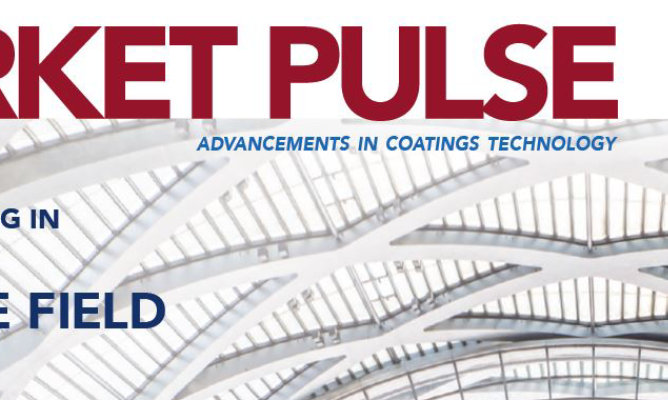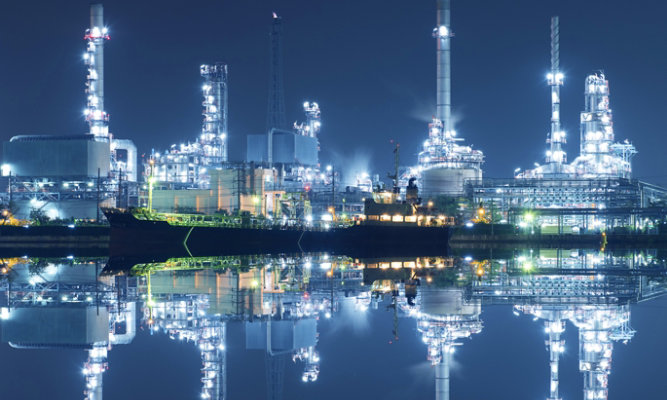
Corrosion Under Insulation The Hidden Problem
Corrosion Under Insulation (CUI) is one of the costliest problems facing the petrochemical industry today. According to one specifier from a global oil company, problems such as major equipment outages and unexpected maintenance costs stemming from CUI account for more unplanned downtime than all other causes.
For a reliability engineer in a hydrocarbon processing environment, the issue has the potential to be nightmarish.
A refinery’s steel piping, storage tanks, container vessels and other process equipment are subject to temperature fluctuations. Thermal insulation applied to the pipe or vessel mitigates the effects, but the presence of seams, gaps or other discontinuities in the insulation layer makes them susceptible to infiltration by outside moisture or from the process environment itself.
The result of infiltration is moisture on the coated pipe or vessel surface or within the insulation itself, which may be made of calcium silicate, expanded perlite, man-made mineral fibres, cellular glass, organic foams, or ceramic fibre. The insulation and cladding hides the protective coating system, though, so even with observation ports, less than 1 percent of the surface is visible – and those areas are not likely to be representative of the whole unit.
Typically, removal of insulation is done only on a 15–20 year cycle. With no intervention, over time the coating system that was intended to guard against corrosion can prematurely fail. Maintenance personnel who happen to remove some insulation to complete a minor repair job are likely to find a degree of corrosion that is an unpleasant surprise.
This paper examines corrosion mechanisms and discusses the recently revised NACE standard governing the current technology and best industry practices for mitigating CUI using protective coatings. NACE Standard SP0198-2010, “The Control of Corrosion Under Thermal Insulation and Fireproofing Materials – A Systems Approach,” now reflects latest insights from the CUI prevention and mitigation experience of the oil and petrol industry, and improvements made to the products and systems available to combat CUI.
The opportunity is two pronged, (1) identifying and correcting incipient problems that may be lurking on existing pipes and vessels that were insulated in the past when coatings, insulation and refinery operating temperatures were different than they are today, and (2) properly specifying protective coatings for new construction projects. This paper will focus on the second of these.
CUI Exposures
CUI Exposures can occur on both carbon steel (CS) or austenitic and duplex stainless steel (SS) substrates. In CS, CUI occurs in piping or equipment with a skin temperature in the range of 25–350°F (-4–175°C), where the metal is exposed to moisture over a period of time under any kind of insulation. The rate of corrosion varies with the specific contaminants in the moisture and the temperature of the steel surface. Waterborne chlorides and sulphates concentrate on the CS surface as the water evaporates. In austenitic and duplex SS, a phenomenon called external stress corrosion cracking (ESCC) occurs, but the temperature threshold is higher, between 120–350°F (50–175°C). For ESCC to develop, sufficient tensile strength must be present. Here again, waterborne chlorides concentrate on the SS’s hot surface as water evaporates.
A Hidden Threat to Surfaces
When the cost of energy increased in the 1970s, the problem of CUI as a pervasive issue was set in motion. Prior to this, little if any thermal insulation was applied to heated CS equipment and vessels below 300°F (150°C). With the energy cost increase, it suddenly became more cost effective to apply thermal insulation even at much lower operating temperatures. At the same time, newer processes came onstream operating at lower and often cyclic temperatures, and austenitic SS pipe and equipment became more commonplace as well. Together these developments dramatically increased the amount of insulation used in the industry and set the stage for CUI.
CUI generally stems from water and infiltration of contaminants to an insulated system which will vary in its water retention, permeability and wetability characteristics. These media may enter the system due to breaks in the waterproofing, inadequate system design, incorrect installation, poor maintenance practices or a combination of the above.
Insulation wicks or absorbs water that enters through breaks or degradation in the insulation system’s weatherproofing. Once wet, the insulation system’s weather barriers and sealants trap the water inside, so the insulation remains moist. Next to the equipment surface, the insulation forms an annular space or crevice that retains the water and other corrosive media.
Sources of water include rainfall, cooling tower drift, steam discharge, wash downs and, because insulation is not vapour tight, condensation. The water may or may not contain additional contaminants; for example, rainwater may become acid rain. Further, chlorides and sulphates that may be native to the insulation can leach into moisture to form acids.
The Role of Protective Coatings
Though valiant efforts to keep water out of insulated systems can be made using different design materials and configurations of the equipment to be insulated, CUI is not usually kept at bay on the strength of those measures alone. Industry guidance, provided by the trade association NACE, holds that immersion-grade protective coatings are the best defence against CUI in both insulated CS and austenitic and duplex SS.
CUI is treated as an immersion condition because of the trapped water under the insulation. Coatings and linings formulated for immersion service are ideal for CUI because the contaminants that pass through the insulation along with the water create an aggressive operating environment.
Coating systems incorporated into the standard have a track record of success and include thin-film, liquid-applied coatings; fusion-bonded coatings; metallising or thermal spray coatings; and wax-tape coatings. A crucial consideration when determining the appropriate protective coating system to use under insulation is the expected service temperature of the equipment or piping, especially when intermittent thermal cycling is present. The coatings on the market are engineered to work at various temperature ranges because one size does not fit all. The most common systems are phenolic epoxies, for temperatures of -50–300°F (-45–150°C) and novolac epoxies, for temperatures of -50–400°F (-45–205°C). Additionally, coatings that can be categorised as inert multipolymeric matrix have shown a temperature range from -50–1,200°F (-45–650°C).
Ten years ago, maximum temperatures that refinery equipment and piping was designed to withstand, and thus the typical process operating temperature of insulated equipment, were lower than they are today. Modern facilities are running at temperatures as high as 400°F (205°C), where 300°F (150°C) was more standard previously. Although most equipment doesn’t run at the high end of the temperature design, spikes can occur for various reasons and must be taken into account when specifying the appropriate coating system.
Coatings suitable for use in refinery environments must demonstrate superior resistance to wet/dry cycling. In fact, product testing can involve as many as six cycles 12 weeks in duration at 425°F (220°C) dry and 150°F (65°C) wet, to certify results where rusting, blistering and coating disbondment do not occur. These coating systems can be used as tank linings as well so they are immersion grade by their nature.
A Revised Standard
Acknowledging the changes in operating temperatures and modifications to coating technologies, a revised NACE standard was published in 2010. One of the most useful resources within the standard itself is the coatings tables, which outline, for given coating system temperature ranges, the recommended surface preparation, surface profile, and categories of prime and finish coats.
The tables, “Typical Protective Coating Systems for Austenitic and Duplex Stainless Steels Under Thermal Insulation,” and “Typical Protective Coating Systems for Carbon Steels Under Thermal Insulation and Fireproofing,” include the addition of new protective coating system technologies and elimination of outdated ones, the addition of metallic coating systems, and a modification of the recommendation for new bulk piping that is primed with an inorganic zinc-rich (IOZ) coating.
Although it is common in the petrochemical and refining industries to use a shop-applied IOZ coating as a primer on new CS piping because it dries quickly and is cost effective, IOZ provides inadequate corrosion resistance in closed, sometimes wet, environments. At temperatures greater than 140°F (60°C), the zinc may undergo a galvanic reversal where the zinc becomes cathodic to the CS. Shop-primed pipe will be finish-coated at the job site depending on the service conditions needed.
The standard recommends topcoating the IOZ to extend its service life, and that it not be used by itself under thermal insulation in service temperatures up to 350°F (175°C) for long-term or cyclic service. In cases where pipe is previously primed with an IOZ coating, it should be topcoated to extend its life. The CS coatings table in the NACE document should be referenced and the coating manufacturer should be consulted for the generic coating, dry film thickness and service temperature limits.
For further details, NACE Standard SP0198 is available online for downloading. For NACE members, standards can be downloaded at no cost. To download the standard, visit the NACE store at www.nace.org/store.
Discover More
Industry Expertise and Innovation
See how we help customers find customised solutions for their project and application challenges.
Our Fire Protection Expertise
Explore our industry solutions and technology to help protect your assets.
LEARN MOREProduct Lookup
Find out more about our innovative coatings for a variety of industries.
FIND A PRODUCT









